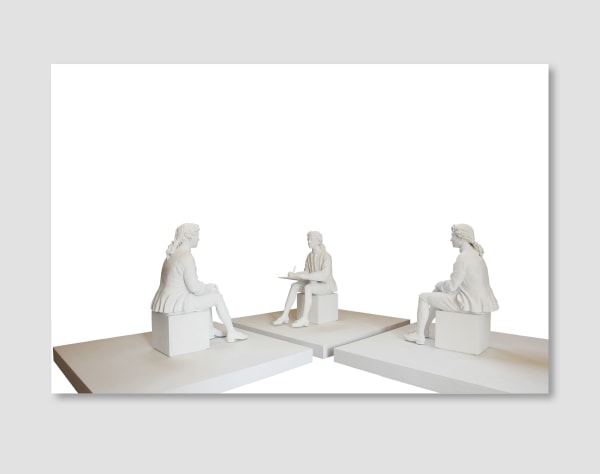-
Biography
Giulio Paolini (Genoa, Italy, 1940)
Born in Genoa in 1940, Giulio Paolini moved to Turin in 1952, where he attended the Istituto Tecnico Industriale Statale per le Arti Grafiche e Fotografiche, graduating in the Graphics section.
Always interested in art, he studied graphics and architecture. In 1960, he launched his first work, “Geometric Drawing”, which was fundamental for all his poetics.
His first solo exhibition was in 1964 in Rome, at Gian Tommaso Liverani's Galleria “La Salita”.
The following year he started using photography and met Luciano Pistoi, owner of the Galleria Notizie in Turin, who was to be his main dealer until the 1970s.
Between 1967 and 1972, he was invited to participate in several exhibitions dedicated to the Arte Povera, although he never identified himself with the movement.
His references in these years range from Jorge Luis Borges to Giorgio de Chirico, from whom he drew inspiration in 1969 for the work “Et.quid.amabo.nisi.quod.ænigma est”.
His participation in the 1970 Venice Biennale was fundamental. During the 1980s he exhibited in various art shows and retrospectives. With his solo exhibition at the Musée des Beaux-Arts (Nantes) in 1987, he started to reflect on the concept of exposition and display, which was to become the central theme of many of his later works.
The art shows of the last decades consolidated him as a contemporary artist of international importance. Major exhibitions include those held at the Galleria Civica d'Arte Moderna e Contemporanea in Turin in 1998, the Galleria d'Arte Moderna Palazzo Forti in Verona in 2001, the Kunstmuseum in Winterthur and Westfälisches Landesmuseum für Kunst und Kulturgeschichte in Münster in 2005, the Macro in Rome in 2013, the Castello di Rivoli in Turin in 2020, and the Accademia di San Luca in the Italian capital in 2023.
© Giulio Paolini
-
Works



